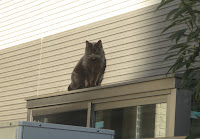Tokyo
holds many events and exhibitions and I enjoy visiting them. Today, I called at
an exhibition of wood products produced in Shizuoka Prefecture, which is famous
for Mt. Fuji and locates 100-200 kilometers west of Tokyo.
Japan
is a wood-rich country (about two thirds of the land is covered with forests),
but it imports about 70% of total wood consumed. Recently, the local producers have begun to promote their products.
They
emphasize that the quality of Japanese wood is high and it has “the sense of warmth” in promoting the products;
they did so in the exhibition.
Timbers as well as wooded products
such as interior materials and floor materials are displayed. The staff
explained the difference of quality with the imported ones.
A
small cottage, a playground slide and several toys were placed in the kid
space. The space was organized by a company which offers children and adults the
opportunities to join various activities, such as camping and wood cutting, in
the forests in Shizuoka.
There
is a trend to use more wood (rather than concrete or other artificial
materials) for interior materials in various buildings. The public gymnasium at
Kusanagi in Shizuoka Prefecture is one example. It uses wood produced in the
area. A big picture of the gym was displayed.
The future possibility was shown at another corner. Reduced-size models of multistory wooden buildings were displayed by a group of architects. It is now technically possible to build a wooden building of five stories or higher. Some experimental houses and buildings are being built in Tokyo and other places.
The future possibility was shown at another corner. Reduced-size models of multistory wooden buildings were displayed by a group of architects. It is now technically possible to build a wooden building of five stories or higher. Some experimental houses and buildings are being built in Tokyo and other places.
There
were several specialists in the site; they asked questions to the
staff.
The tea corner was also made by the local products.
The tea corner was also made by the local products.
The
exhibition was organized by Shizuoka Prefecture in cooperation with the local industry
associations and the companies. It is a part of moves to revitalize local
economy.
Many
efforts are made by local people for the purpose. Some ideas are remarkable. It
is interesting to visit events and exhibitions and to find new ideas.















